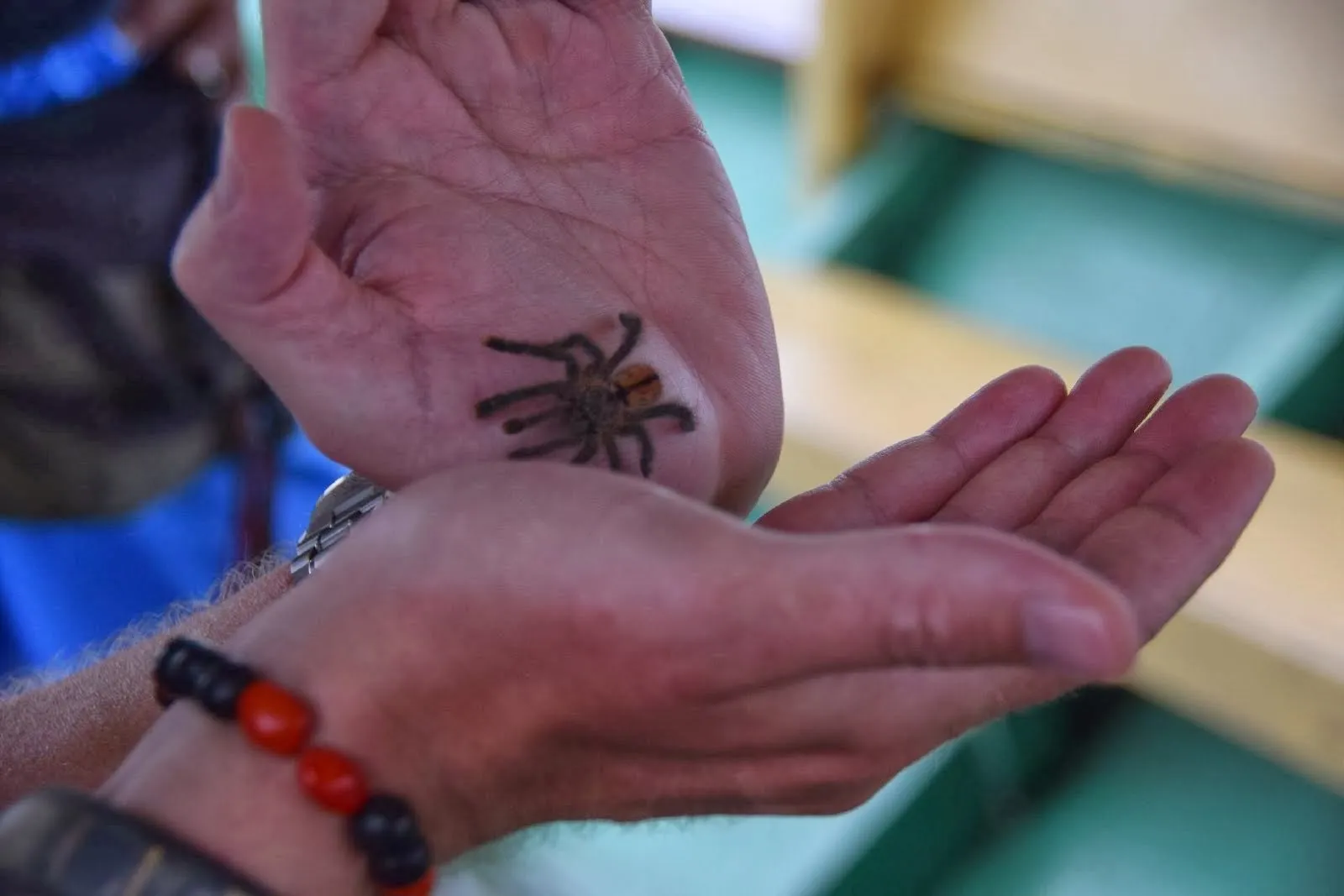The Pink Toe Tarantula (Avicularia avicularia) is a popular and fascinating pet choice for both novice and experienced arachnid enthusiasts. Known for its striking appearance, arboreal lifestyle, and relatively docile nature, this species offers a rewarding experience for those willing to learn about their care. This comprehensive guide provides everything you need to know about successfully keeping a Pink Toe Tarantula, from choosing your first spider to understanding its specific needs and ensuring its overall well-being. This guide aims to assist you in establishing a thriving habitat, maintaining proper care routines, and ensuring a long and healthy life for your Pink Toe Tarantula.
Choosing Your Pink Toe Tarantula
Choosing the right Pink Toe Tarantula is the first and most crucial step in successful tarantula ownership. A healthy tarantula will be active, alert, and exhibit signs of good health. Taking the time to select a healthy specimen will save you potential headaches and heartbreak down the line. Consider factors like the seller’s reputation and the overall conditions of the tarantula’s environment before making your selection. Don’t rush the process; ensure you feel comfortable with your choice and are ready to provide a suitable home for your new pet.
Selecting a Healthy Pink Toe Tarantula
Signs of a Healthy Tarantula
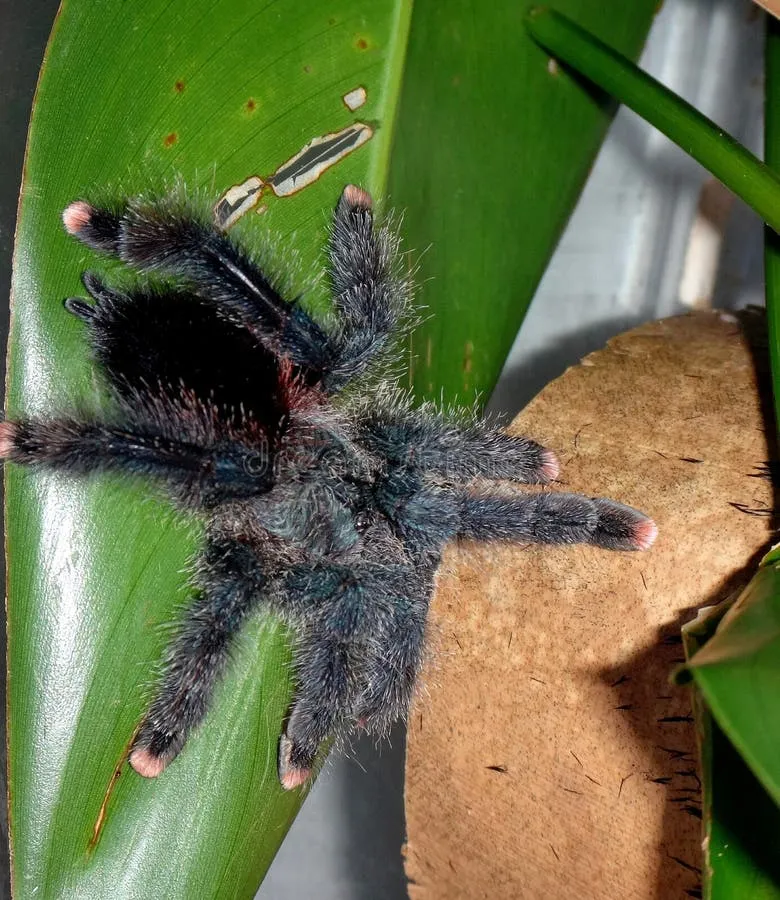
A healthy Pink Toe Tarantula should exhibit several key characteristics. The tarantula should be alert and responsive to stimuli, not lethargic or slow-moving. It should have a plump abdomen, without any signs of wrinkles or dehydration. The fangs should be intact and clean, and the spider should have all its legs. The legs should be strong and capable of supporting the spider’s weight. Look for a vibrant coloration that is typical of the species, with no discoloration or unusual spots. Carefully observe the spider’s behavior, looking for any signs of distress, such as twitching or erratic movements. A healthy tarantula is a happy tarantula, so take the time to make the right choice.
Where to Buy Your Tarantula
Purchasing your Pink Toe Tarantula from a reputable source is essential. Avoid buying from pet stores that do not specialize in exotic pets or where the tarantulas are not properly cared for. Local reptile and exotic pet stores are generally a better option, as they often have knowledgeable staff who can provide guidance and support. Online breeders and specialized tarantula retailers are also viable options. Ensure that the seller has a good reputation and offers a guarantee of the tarantula’s health. If possible, visit the store or breeder in person to inspect the spider and its habitat before making a purchase. Always prioritize the well-being of the tarantula and choose a seller who shares your commitment to responsible pet ownership. (pink-toe-tarantula-choosing.webp)
Setting Up Your Pink Toe Tarantula’s Habitat
Creating the right habitat is crucial for the health and well-being of your Pink Toe Tarantula. These arboreal spiders thrive in a habitat that mimics their natural environment, providing them with the necessary space, humidity, and security. The setup should be designed to encourage natural behaviors, such as climbing and webbing. A well-designed enclosure will also make it easier for you to observe your tarantula and maintain its care. A properly established habitat reduces stress, promotes proper molting, and contributes to the overall longevity of your pet.
Appropriate Enclosure Size
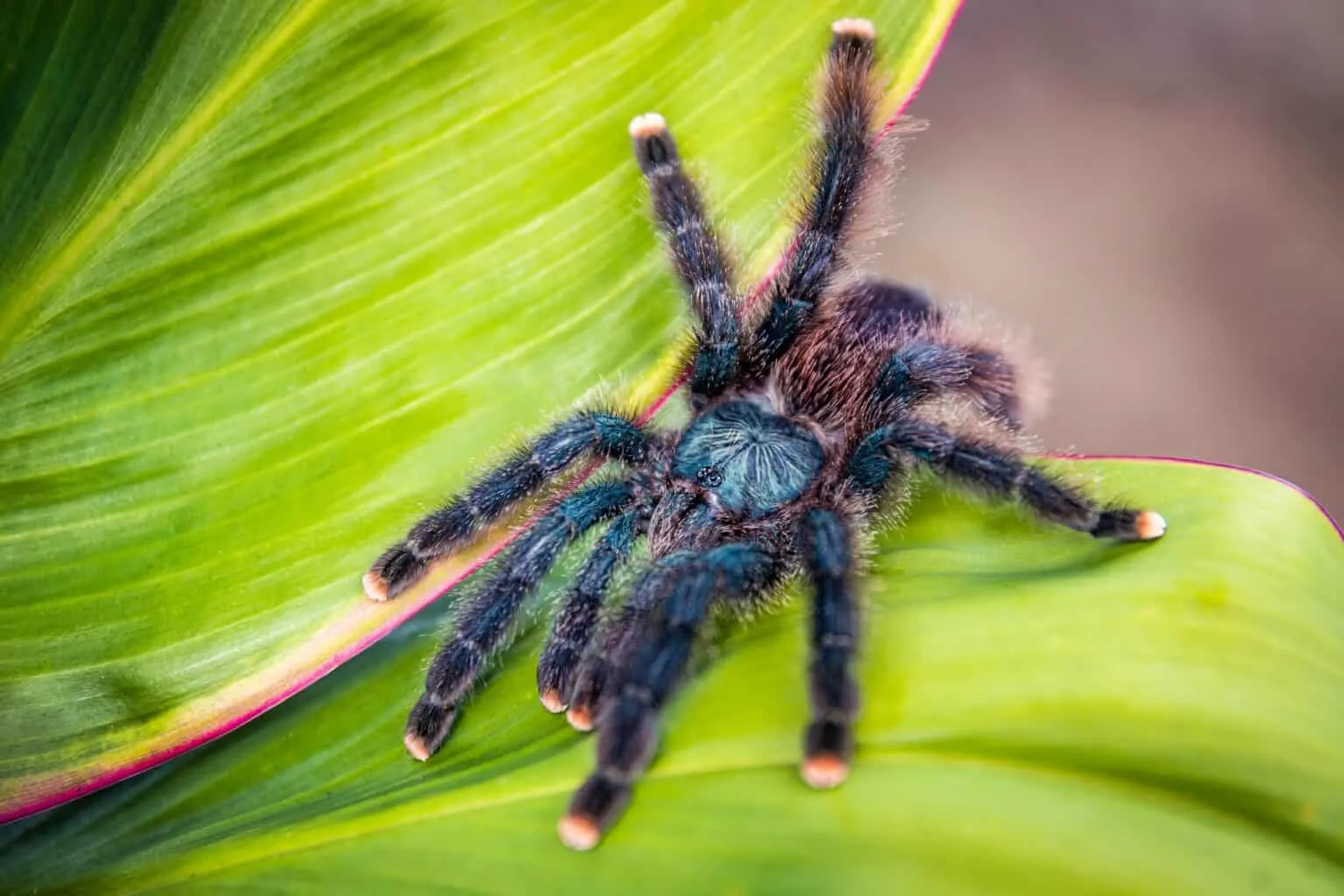
The size of the enclosure should be appropriate for the size of your Pink Toe Tarantula. A good rule of thumb is to provide a habitat that is at least three times the tarantula’s leg span in width and height. A juvenile tarantula can start in a smaller enclosure, such as a deli cup or a small, secure container. As the spider grows, it will need to be moved to a larger enclosure. For an adult Pink Toe Tarantula, a 10-gallon terrarium or a similar sized enclosure is usually sufficient. The enclosure should be well-ventilated, with a secure lid to prevent escape. Always prioritize space for the tarantula to move around and create its web, allowing for proper growth and healthy living.
Substrate Selection and Depth
The substrate is the material at the bottom of the enclosure. For Pink Toe Tarantulas, the substrate should be able to retain humidity and allow the spider to burrow. Good options include a mix of coco fiber, peat moss, and a small amount of vermiculite. The substrate should be about 2-3 inches deep to provide a safe environment for the tarantula. Avoid substrates like sand or gravel, which can be difficult to maintain and may not hold humidity well. The substrate should be kept moist but not soaking wet. Regular monitoring and maintenance of the substrate will help ensure that the humidity levels are optimal for your tarantula.
Temperature and Humidity
Pink Toe Tarantulas thrive in a warm and humid environment. The ideal temperature range is between 75-85°F (24-29°C). A heat source, such as an under-tank heater or a low-wattage heat lamp, can be used to maintain this temperature, but ensure the heat source does not directly touch the enclosure. Humidity levels should be maintained between 70-80%. This can be achieved by misting the enclosure with dechlorinated water a few times a week, or as needed to keep the substrate moist. A hygrometer can be used to monitor the humidity levels accurately. Adequate ventilation is crucial to prevent mold growth and ensure the tarantula’s health. (pink-toe-tarantula-habitat.webp)
Essential Habitat Decor
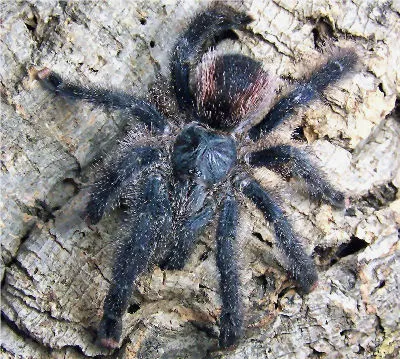
Provide your Pink Toe Tarantula with a variety of habitat decorations to enrich its environment. Cork bark, branches, and artificial plants are excellent additions as they allow the tarantula to climb, web, and feel secure. Ensure that all decorations are non-toxic and free of sharp edges that could harm the tarantula. A shallow water dish should also be provided, which is essential for hydration. The water dish should be cleaned regularly to prevent bacterial growth. By providing a variety of decorations, you can create a stimulating and naturalistic environment that mimics the tarantula’s natural habitat and encourages its natural behaviors.
Feeding Your Pink Toe Tarantula
Feeding your Pink Toe Tarantula appropriately is essential for its health and growth. These spiders are voracious eaters, but overfeeding can lead to health problems. The feeding frequency and the type of food you offer should be based on the tarantula’s age and size. A well-fed tarantula is more likely to thrive and will be a more enjoyable pet. Monitoring your tarantula’s feeding habits and adjusting your approach based on its appetite ensures the best care. Keep the feeding schedule consistent, and always remove any uneaten food within 24 hours to prevent the growth of mold or mites.
Best Food Options
The primary food source for Pink Toe Tarantulas should be insects. Crickets, roaches, mealworms, and other commercially available insects are all suitable choices. The size of the insect should be appropriate for the size of the tarantula. Generally, the insect should be no larger than the tarantula’s body size. Avoid feeding wild-caught insects, as they may contain parasites or pesticides that can harm your tarantula. Variety is important; offer different types of insects to ensure the tarantula receives a balanced diet. Supplement the insects with vitamin and calcium dust to provide extra nutrients. Ensure the insects are gut-loaded before feeding them to your tarantula, which means feeding them a nutritious diet to increase their nutritional value. (pink-toe-tarantula-feeding.webp)
Feeding Frequency and Amount
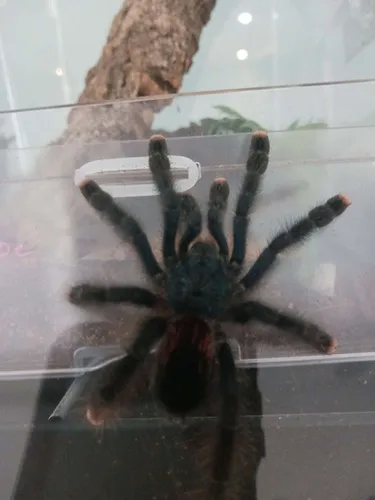
The feeding frequency depends on the tarantula’s age and growth stage. Spiderlings and juvenile tarantulas should be fed more frequently than adults. Spiderlings can be fed 2-3 times per week, while juveniles can be fed once or twice a week. Adult Pink Toe Tarantulas can typically be fed once a week or every other week. Observe your tarantula’s abdomen to determine if it is well-fed. A plump abdomen indicates the tarantula is well-nourished, while a thin abdomen suggests it needs more food. Remove any uneaten food within 24 hours to maintain a clean enclosure.
Watering and Hydration
Providing fresh water is vital for your Pink Toe Tarantula’s survival. Always provide a shallow water dish with fresh, clean water. The water dish should be shallow enough that the tarantula can easily access it without risk of drowning. Change the water in the dish at least every other day to prevent the growth of bacteria and mold. In addition to the water dish, you should also mist the enclosure with dechlorinated water a few times a week. Misting helps maintain humidity levels and provides a source of water for the tarantula. It is important to avoid over-misting, as excessive moisture can lead to mold and other health problems. (pink-toe-tarantula-handling.webp)
Handling and Interaction
While Pink Toe Tarantulas are relatively docile, they are still delicate creatures and should be handled with caution. Understanding when and how to handle your tarantula is important to ensure its safety and your own. Handling should be kept to a minimum, as it can cause stress to the tarantula. Observe your tarantula’s behavior closely, and always prioritize its well-being. Always remember that a tarantula is a wild animal. It is important to approach handling with respect and understanding.
When to Handle Your Tarantula
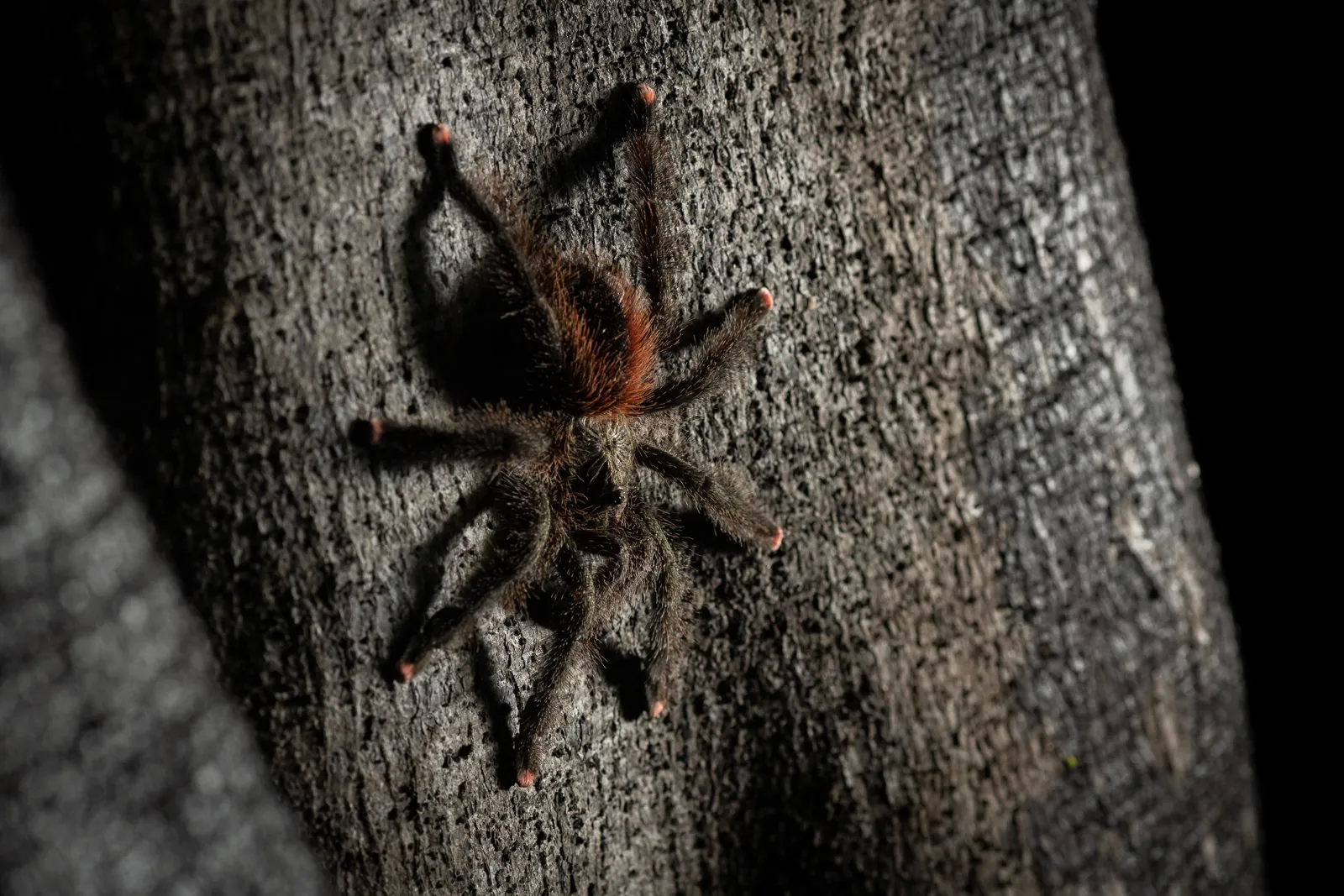
Handling should generally be avoided unless absolutely necessary, such as for enclosure cleaning or health inspections. Avoid handling your tarantula after it has molted, as its exoskeleton will be soft and vulnerable. Do not handle your tarantula if it appears stressed or defensive, as it may bite. Look for signs of stress, such as a defensive posture or raised front legs. If you must handle your tarantula, do so in a safe and controlled environment. This will minimize the risk of dropping the tarantula and causing injury. The primary focus should always be on the tarantula’s well-being.
Proper Handling Techniques
If handling is necessary, approach your tarantula gently and slowly. Use a soft, wide brush or a piece of cardboard to gently encourage the tarantula to move onto your hand. Never grab or startle the tarantula. Keep your movements slow and deliberate. Support the tarantula’s body with both hands, allowing it to walk across your palm. Handle the tarantula close to the ground or over a soft surface, such as a bed or a carpet, to prevent injury if it falls. Wash your hands thoroughly before and after handling to prevent the transfer of any substances that could be harmful to the tarantula. (pink-toe-tarantula-health.webp)
Health and Wellness
Maintaining your Pink Toe Tarantula’s health involves providing proper care, a suitable environment, and attention to any potential health issues. Recognizing signs of illness and acting promptly can help prevent serious problems. Regular monitoring, a clean enclosure, and a balanced diet are all essential components of keeping your tarantula healthy and happy. Being aware of common health issues and preventative measures ensures your pet has the best possible life. Prioritizing its well-being ensures that you can enjoy your tarantula for many years to come.
Common Health Issues
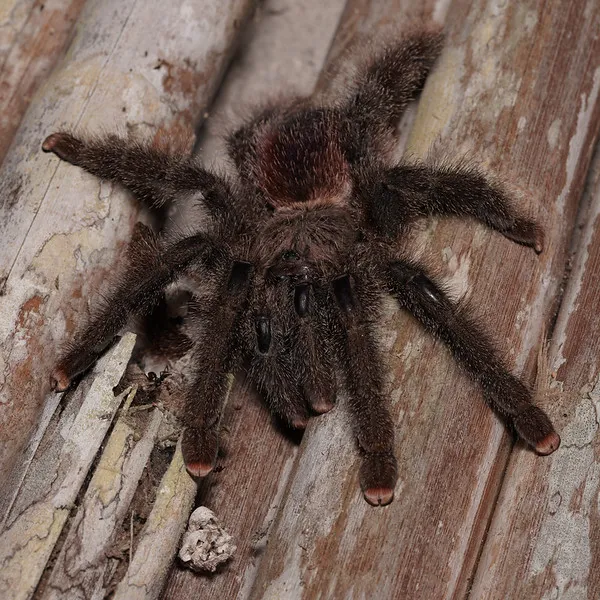
Like any pet, Pink Toe Tarantulas can be susceptible to certain health issues. Dehydration is a common problem, usually caused by insufficient water or low humidity levels. Watch for signs like a shriveled abdomen and lethargy. Parasites, such as mites, can also infest tarantulas, often due to unsanitary conditions. Check your tarantula regularly for any signs of parasites. Fungal infections can occur if the environment is too humid. Ensure proper ventilation and humidity control to prevent these infections. Always quarantine new tarantulas to observe for any signs of illness before introducing them to other spiders. Consult an experienced breeder or a veterinarian specializing in exotic pets if you notice any unusual symptoms.
Preventative Care
Preventative care is essential to keep your Pink Toe Tarantula healthy. Maintaining a clean enclosure is one of the most important aspects of preventative care. Regularly remove any uneaten food and fecal matter to prevent the growth of mold and mites. Ensure that the substrate is kept at the appropriate moisture level and is replaced regularly. Provide a balanced diet with appropriate supplements, such as calcium and vitamins. Avoid overfeeding, which can lead to health problems. Quarantine new tarantulas to observe for any signs of illness before introducing them to your collection. By proactively practicing preventative care, you can significantly reduce the risk of health problems and ensure your tarantula lives a long and healthy life.
Shedding and Molting
Molting is a natural process where tarantulas shed their exoskeletons to grow. During this time, the tarantula will become inactive and may lose its appetite. Provide a moist environment to assist the process. Do not disturb your tarantula during the molting process. After molting, the tarantula will be very vulnerable. Avoid handling it until its new exoskeleton has hardened, which may take a week or two. Observe the tarantula for a week after molting, and make sure to remove the old exoskeleton after the process is complete. This allows the tarantula to grow and thrive. (pink-toe-tarantula-shedding.webp)
Breeding Pink Toe Tarantulas
Breeding Pink Toe Tarantulas can be a rewarding experience, but it requires careful planning, experience, and knowledge. Success depends on understanding the tarantulas’ specific needs and behaviors. Breeding tarantulas involves risks and responsibilities, so it is only recommended for experienced keepers. Before considering breeding, educate yourself thoroughly on the entire process, the potential challenges, and the commitment required. Prioritizing the welfare of the tarantulas is the most important thing.
Identifying Sex
Accurately identifying the sex of your tarantula is crucial for breeding. The most reliable method is to examine the tarantula’s molt. After the tarantula molts, you can check the shed exoskeleton for the presence of spermathecae. Spermathecae are located on the underside of the female’s abdomen and appear as small, sac-like structures. Males lack spermathecae but have a pair of modified pedipalps called “boxing gloves”, which are used for mating. Ventral sexing can also be attempted, but it is less accurate, especially in younger tarantulas. Accurate sexing will help you plan your breeding efforts.
Mating and Egg Sacs
Mating Pink Toe Tarantulas involves introducing a mature male to a receptive female. The female must be well-fed and in good health. Monitor the mating process closely, as the female may sometimes attack the male. If the mating is successful, the female will lay eggs and create an egg sac. The egg sac should be carefully monitored, and the eggs should be incubated under the appropriate temperature and humidity conditions. After the spiderlings hatch, they will need to be separated and raised individually. Breeding tarantulas is a complex process that requires a significant amount of time and resources. Always prioritize the health and safety of the tarantulas. (pink-toe-tarantula-breeding.webp)
In conclusion, caring for a Pink Toe Tarantula is a rewarding experience, offering a unique glimpse into the world of these fascinating creatures. This comprehensive guide has covered the essentials of choosing a healthy tarantula, setting up its ideal habitat, feeding it properly, handling it safely, and maintaining its health. By following these guidelines and continuing to learn about your tarantula’s needs, you can ensure a long and fulfilling life for your pet. Remember that responsible pet ownership is paramount, and the well-being of your Pink Toe Tarantula should always be your top priority.
